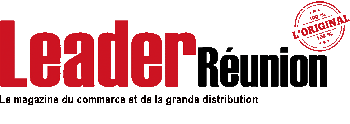The Covid-19 pandemic has strongly favored the growth of e-commerce platforms : 27,000 new e-commerce sites were created last year according to the latest figures from the Federation of e-commerce and distance selling (Fevad). The sector would have exceeded, in 2021, the 129 billion euros of online purchases of products and services, an increase of 15,1% compared to 2020. Platform publisher Origami Marketplace draws attention to upcoming retail innovations.
In the sector of retail, using a marketplace represents a definite advantage for businesses : opening its activity to new markets and buyers, the capitalization of data collected on the consumer or even the faster deployment of business on a large scale. Some of them, like Origami Marketplace, offer new, more virtuous consumption models such as the circular and collaborative economy., booming. Compared to a physical store, the marketplace can more easily focus on optimizing the resources used and implementing common strategies, particularly for logistics and transport. But this is not the only new concept that exists today.
A sharp increase in rentals
Product rental is booming with the development of this service with large companies like Decathlon, Maje or Kiabi. This new trend makes it possible to use a high-cost product as in the household appliances sector.. For example, what appeals to students. However, rental reveals certain disadvantages such as the end of life of products after consumption, the risk of overconsumption, maintenance on the user side and logistical problems for repair or receipt of products. Renting is a simple lever to put in place, but the behind the scenes is quite heavy, because many brands are not used to this practice.

Big news in the retail sphere : in 2023, the anti-waste law comes into force and calls for the elimination of the receipt. The latter will therefore become a real axis of retail media with the insertion of advertisements on it or the possibility of using data. Beyond these marketing aspects, this removal aims to make retail more virtuous for the environment. The disadvantage of this measure? Be careful to take into account non-digitized consumers.

Many Web3 projects aim to improve the consumer experience and, moreover, to promote customer engagement in store. They offer an immersion in the metaverse to train sellers, or to simulate store concepts. Phygital experiments via a dematerialized store also make it possible to optimize additional sales (cross selling). for example, the stock of companies is greater, because it includes that of the point of sale, but also the products available on the web. It is also a good lever for consuming on two different channels without friction thanks to omnichannel.
The phygitalization of the second hand
First developed on digital with big players like Vinted or Le Bon Coin, the second-hand market is going digital, and its consumption is now deployed in omnichannel mode, with the establishment of corner stores or the receipt of products for reconditioning.
The advent of retail media
More and more companies are using the wide range of retail media tools. This underlying trend comes straight from marketplaces which do not only serve as a sales channel, but also real advertising leverage. Some go even further. In 2021, most large retailers have launched their own advertising network, like FNAC, Darty or Carrefour. After the act of purchase, players target their consumers via their purchasing journey to offer them targeted advertising and collect valuable data. Going even further than social networks in terms of resonance and conversion, retail media is a strong lever for growth and customer knowledge which makes it the new El Dorado for brands.












